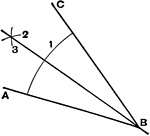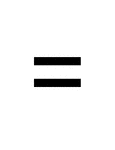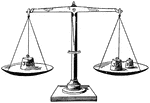
Addition Scale
A balance scale holding 5 pounds on the left and 3 and 2 pound weights on the right showing 3+2=5.

Equal Dihedral Angles
Illustration of 3 equal dihedral angles. "Two dihedral angles have the same ratio as their plane angles."
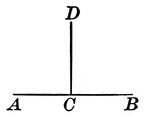
Right Angles With Same Vertex
An illustration showing when one straight line meets another straight line and makes the adjacent angles…

Symmetrical or Equal Trihedral Angles
Diagram used to prove the theorem: "Two trihedral angles, which have three face angles of the one equal…

Angles With Parallel Sides
Illustration of two angles whose sides are parallel, each to each, to show they are either equal or…
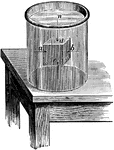
Archimedies Principle
"It is evident that, when a solid is immersed in a fluid, it will displace exactly its own volume of…
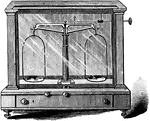
Balance
"The balance is essentially a lever of the first class, having equal arms. The beam carries a pan at…
Balance
"When bodies of equal weight are supported by the arms of a lever, they will balance each other when…

Equal Tangents to Circle Theorem
Illustration used to show that "If two tangents are drawn from any given point to a circle, those tangents…
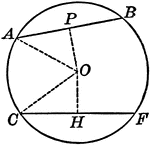
Circle With Equal Chords
Illustration of a circle with equal chords, which are equally distant from the center.

Equal Circles With Intercepted Arcs
Illustration of equal circles to show that two central angles have the same ratio as their intercepted…
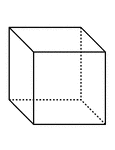
Cube
"A cube is a prism whose faces are ends are squares. All the faces of a cube are equal." —Hallock…
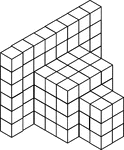
108 Stacked Congruent Cubes
Illustration of 108 congruent cubes stacked at various heights. A 3-dimensional representation on a…
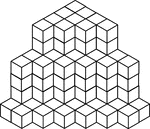
117 Stacked Congruent Cubes
Illustration of 117 congruent cubes stacked in columns of one, four, and six. A 3-dimensional representation…

128 Stacked Congruent Cubes
Illustration of 128 congruent cubes stacked so they form a rectangular solid that measures 4 by 4 by…

132 Stacked Congruent Cubes
Illustration of 132 congruent cubes stacked in 22 columns of 6 in the shape of a U. A 3-dimensional…
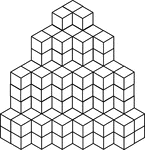
154 Stacked Congruent Cubes
Illustration of 154 congruent cubes stacked in columns increasing from one to four. A 3-dimensional…

16 Stacked Congruent Cubes
Illustration of 16 congruent cubes stacked at various heights. A 3-dimensional representation on a 2-dimensional…

17 Stacked Congruent Cubes
Illustration of 17 congruent cubes stacked in ones and twos in the shape of a V. A 3-dimensional representation…

2 Congruent Cubes
Illustration of two congruent cubes that are tangent along an edge. A 3-dimensional representation on…

20 Stacked Congruent Cubes
Illustration of 20 congruent cubes stacked in twos and threes. A 3-dimensional representation on a 2-dimensional…
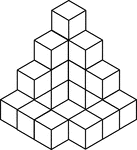
20 Stacked Congruent Cubes
Illustration of 20 congruent cubes stacked at various heights. A 3-dimensional representation on a 2-dimensional…
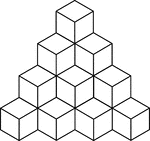
20 Stacked Congruent Cubes
Illustration of 20 congruent cubes stacked at heights increasing from 1 to 4 cubes. A 3-dimensional…
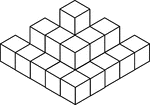
22 Stacked Congruent Cubes
Illustration of 22 congruent cubes stacked in ones, twos, and threes. A 3-dimensional representation…
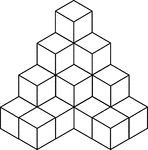
22 Stacked Congruent Cubes
Illustration of 22 congruent cubes stacked at various heights. A 3-dimensional representation on a 2-dimensional…

24 Stacked Congruent Cubes
Illustration of 24 congruent cubes stacked at various heights to resemble steps. A 3-dimensional representation…
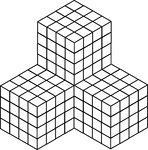
256 Stacked Congruent Cubes
Illustration of 256 congruent cubes stacked so they form 4 larger cubes that measures 4 by 4 by 4 each.…
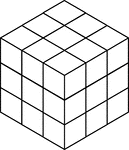
27 Stacked Congruent Cubes
Illustration of 27 congruent cubes stacked to resemble a larger cube that measures three by three by…

27 Stacked Congruent Cubes
Illustration of 27 congruent cubes stacked at various heights in the shape of a W. A 3-dimensional representation…

28 Congruent Cubes Placed in the Shape of a Square
Illustration of 28 congruent cubes placed in the shape of a square. A 3-dimensional representation on…
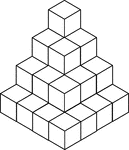
30 Stacked Congruent Cubes
Illustration of 30 congruent cubes stacked in decreasing heights. A 3-dimensional representation on…

33 Stacked Congruent Cubes
Illustration of 33 congruent cubes stacked at various heights in a zigzag pattern. A 3-dimensional representation…
35 Stacked Congruent Cubes
Illustration of 35 congruent cubes stacked in ones and twos in the shape of a W. A 3-dimensional representation…

35 Stacked Congruent Cubes
Illustration of 35 congruent cubes stacked at various heights. A 3-dimensional representation on a 2-dimensional…

36 Stacked Congruent Cubes
Illustration of 36 congruent cubes stacked at various heights with outer edges forming a square. A 3-dimensional…

36 Stacked Congruent Cubes
Illustration of 36 congruent cubes stacked to resemble a 1 by 1 by 1 cube on a 2 by 2 by 2 cube on a…

39 Stacked Congruent Cubes
Illustration of 39 congruent cubes stacked at various heights. A 3-dimensional representation on a 2-dimensional…

4 Stacked Congruent Cubes
Illustration of 4 congruent cubes stacked in ones and twos. A 3-dimensional representation on a 2-dimensional…

50 Stacked Congruent Cubes
Illustration of 50 congruent cubes stacked at various heights. A 3-dimensional representation on a 2-dimensional…
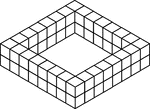
56 Stacked Congruent Cubes
Illustration of 56 congruent cubes stacked in twos in the shape of a square. A 3-dimensional representation…

56 Stacked Congruent Cubes
Illustration of 56 congruent cubes stacked in heights of 1, 4, and 5 cubes that form a zigzag pattern.…

57 Stacked Congruent Cubes
Illustration of 57 congruent cubes stacked in heights of 1 and 5 cubes that form a zigzag pattern. A…

59 Stacked Congruent Cubes
Illustration of 59 congruent cubes stacked at various heights. A 3-dimensional representation on a 2-dimensional…
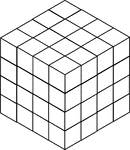
64 Stacked Congruent Cubes
Illustration of 64 congruent cubes stacked so they form a cube that measures 4 by 4 by 4. A 3-dimensional…

65 Stacked Congruent Cubes
Illustration of 65 congruent cubes stacked at heights increasing from 1 to 5 cubes. A 3-dimensional…
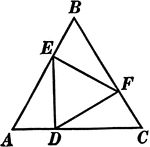
Equilateral Triangle Inscribed In An Equilateral Triangle
Illustration used to prove that triangle EFD is equilateral given that triangle ABC is equilateral and…
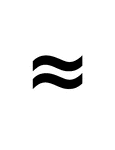
Flashcard of a math symbol for Approximately Equal To
A flashcard featuring a math symbol for Approximately Equal To

Angle Bisectors In An Isosceles Triangle
Illustration showing that if two angles of a triangle are equal, the bisectors of these angles are equal.

Base Angles In An Isosceles Triangle
Illustration showing that can be used to prove that the base angles of an isosceles triangle are equal.
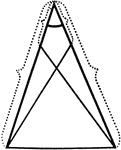
Equal Segments In An Isosceles Triangle
Illustration showing that if equal segments measured from the vertex are laid off on the arms of an…
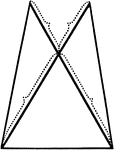
Equal Segments In An Isosceles Triangle
Illustration showing that if equal segments prolonged through the vertex are laid off on the arms of…

Equal Segments In An Isosceles Triangle
Illustration showing that if equal segments measured from the end of the base are laid off on the base…
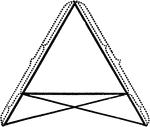
Equal Segments In An Isosceles Triangle
Illustration showing that if equal segments measured from the end of the base prolonged are laid off…
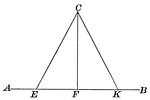
Lines Drawn to Another Line to Form Triangle
Illustration of two straight lines drawn from a point in a perpendicular to a given line, cutting off…

Parallel Lines With Equal Segments Between
Illustration of two parallel lines with equal segments between them. Two parallel lines are everywhere…
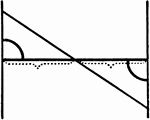
Parallel Lines Cut By a Perpendicular And Transversal
Illustration showing two parallel vertical lines cut by a perpendicular line and a transversal. Congruent…


